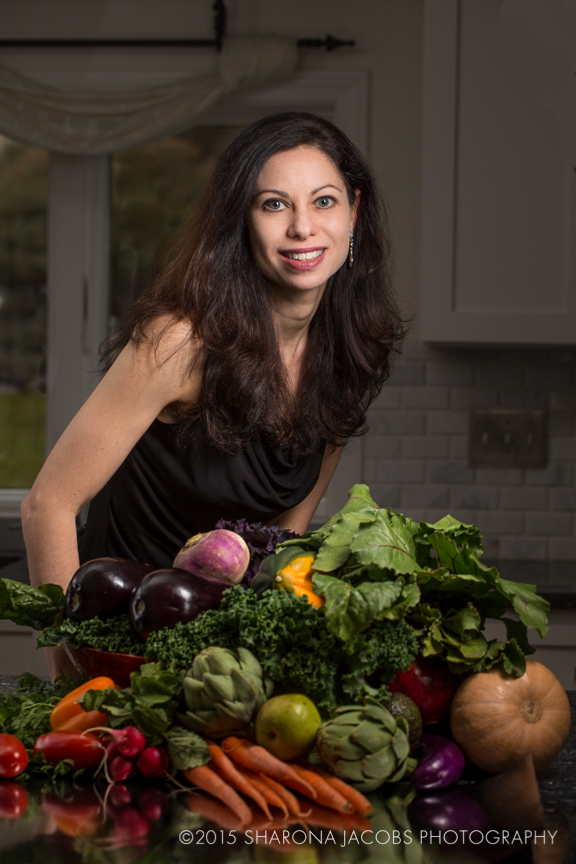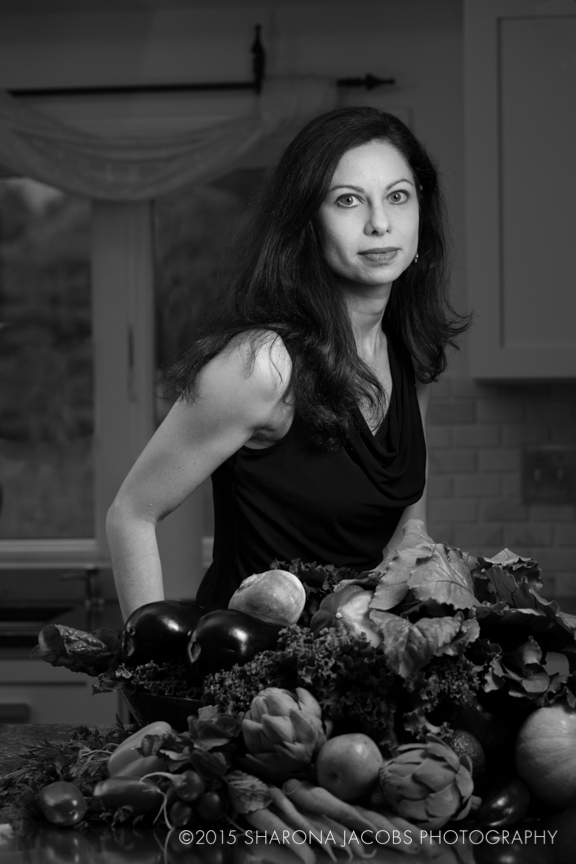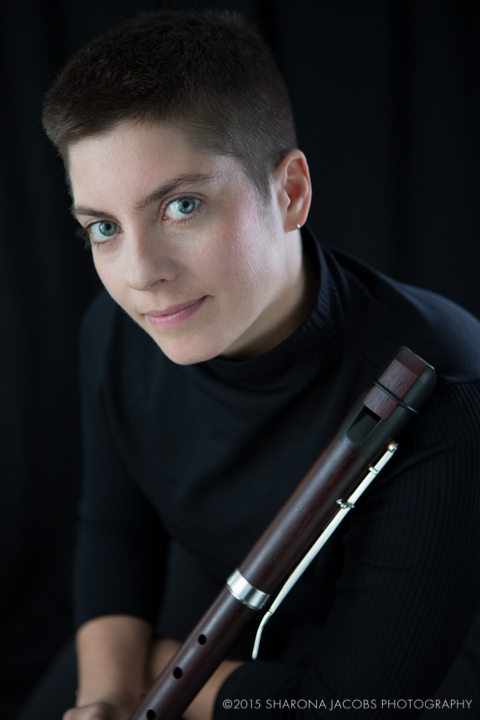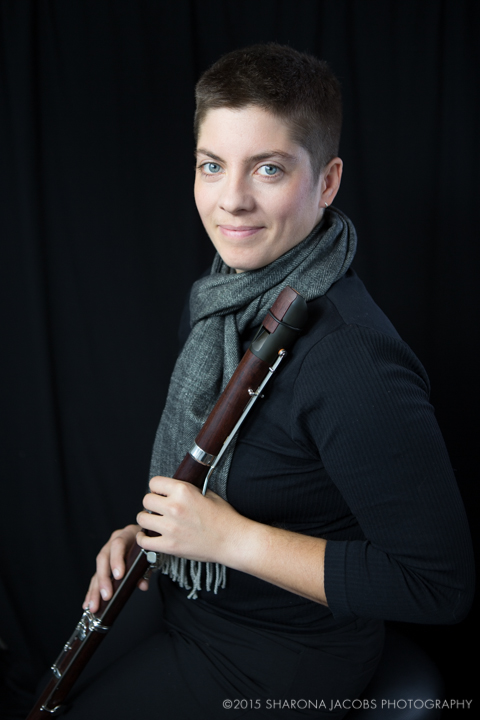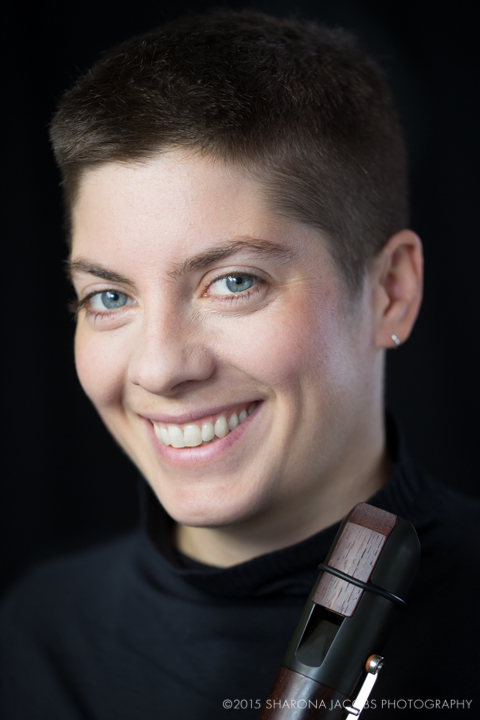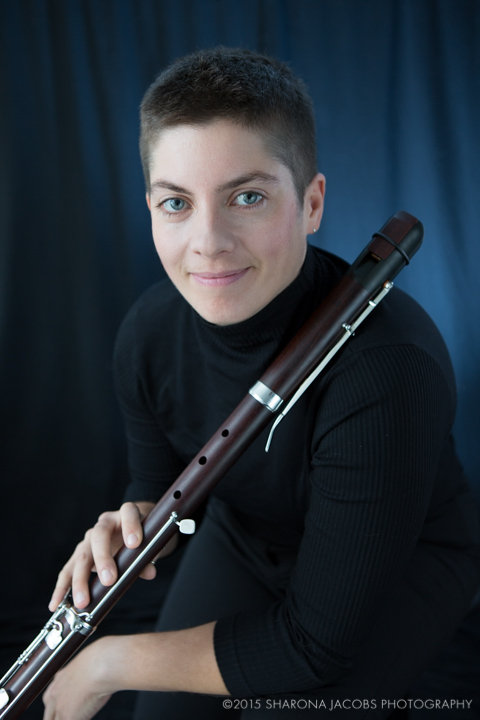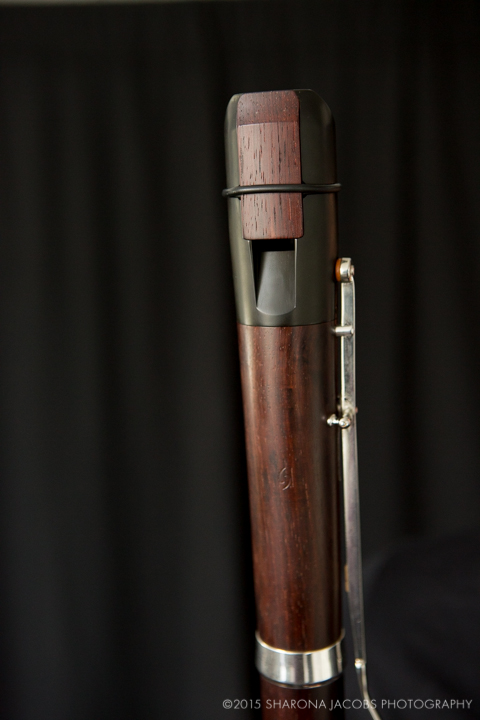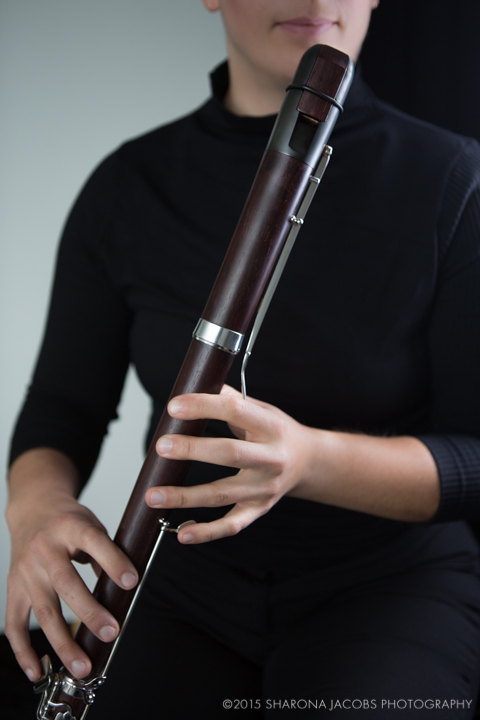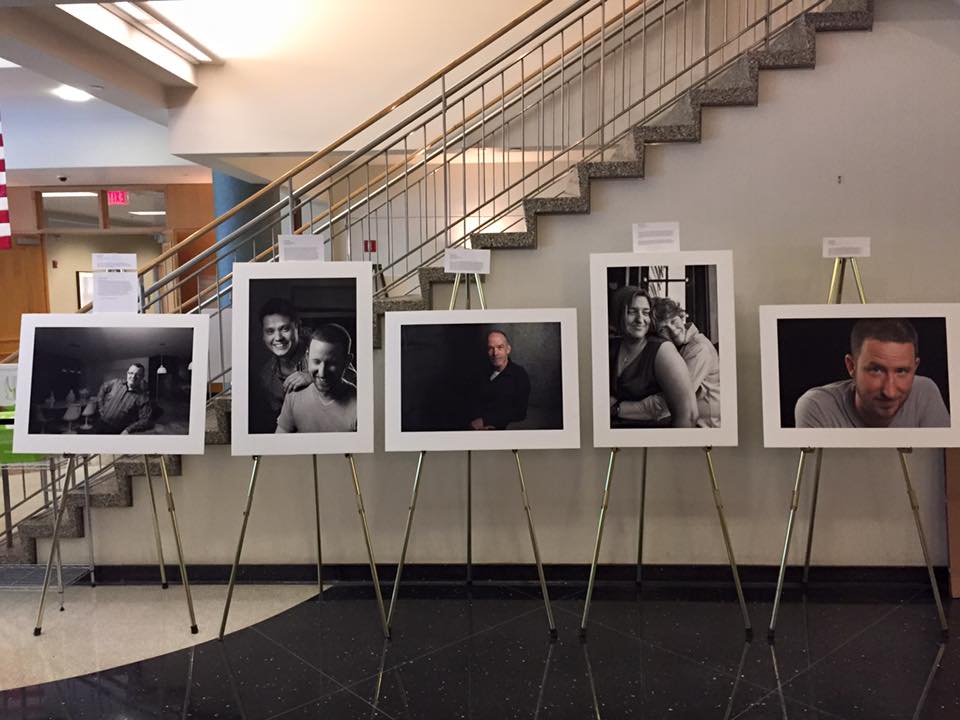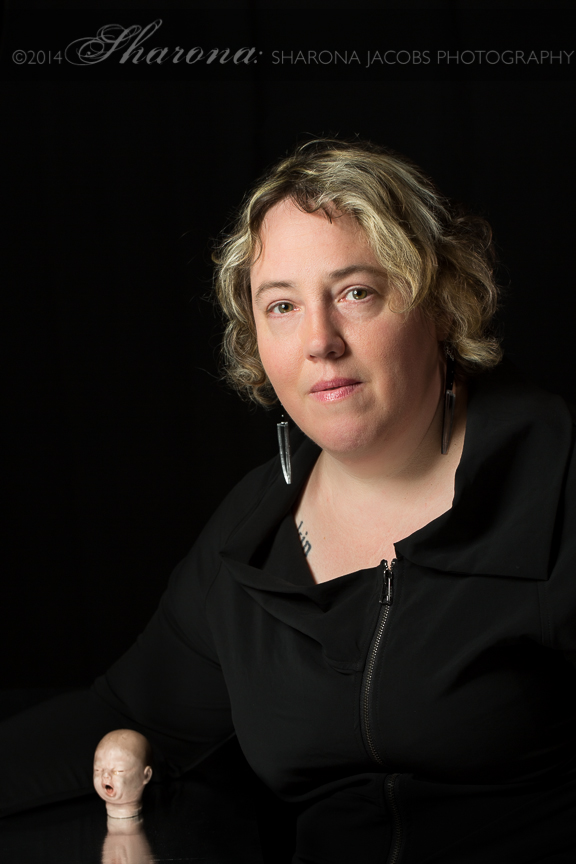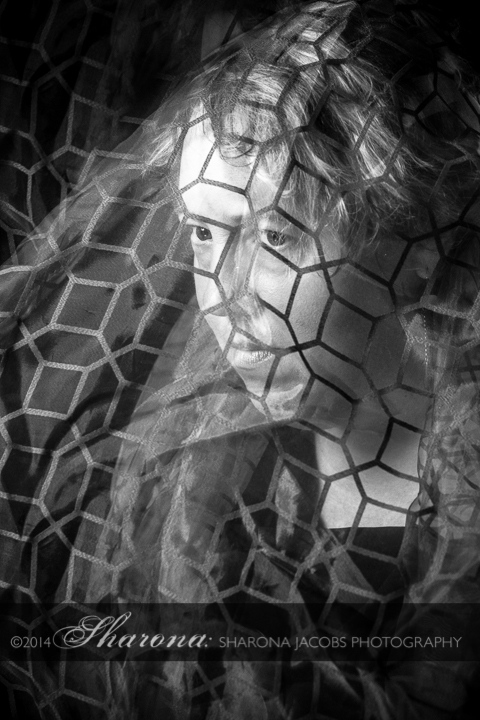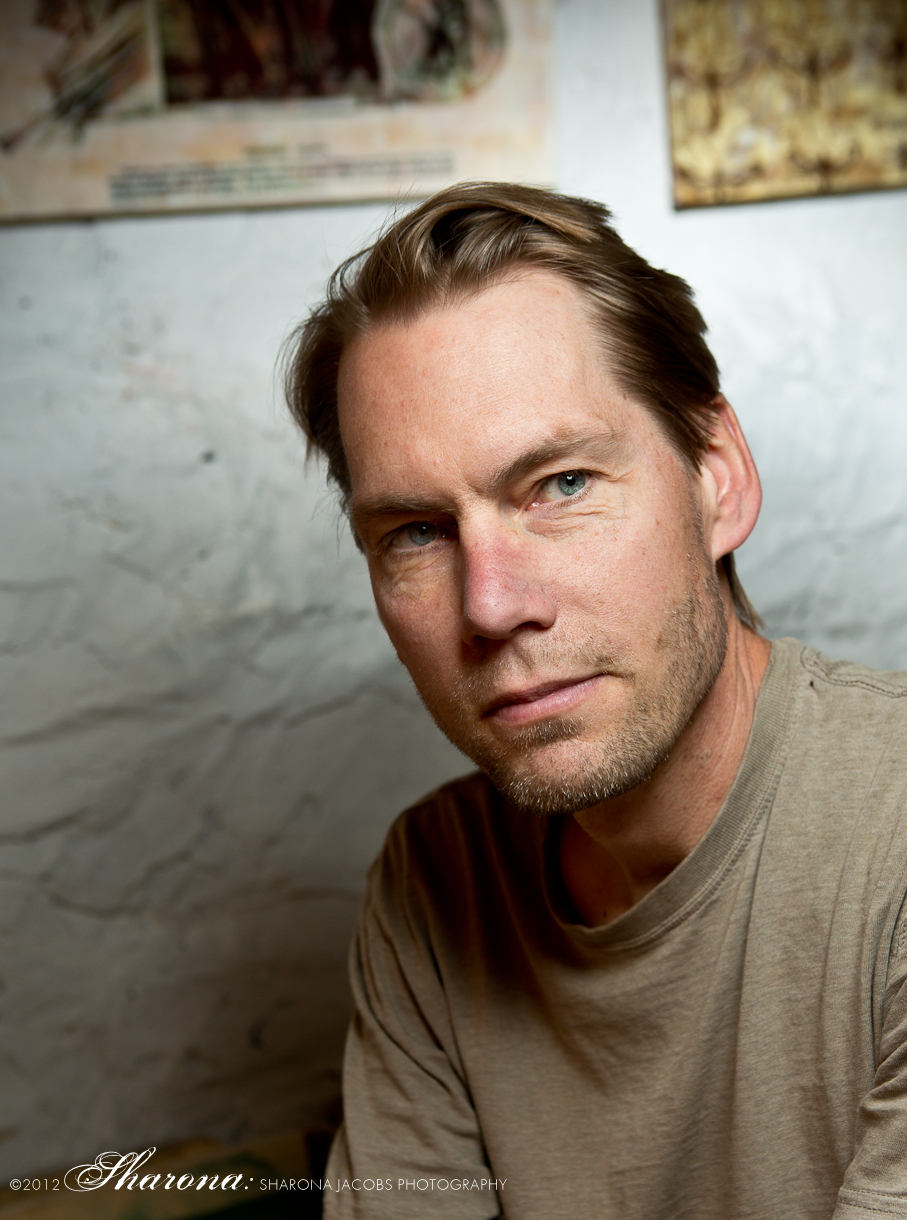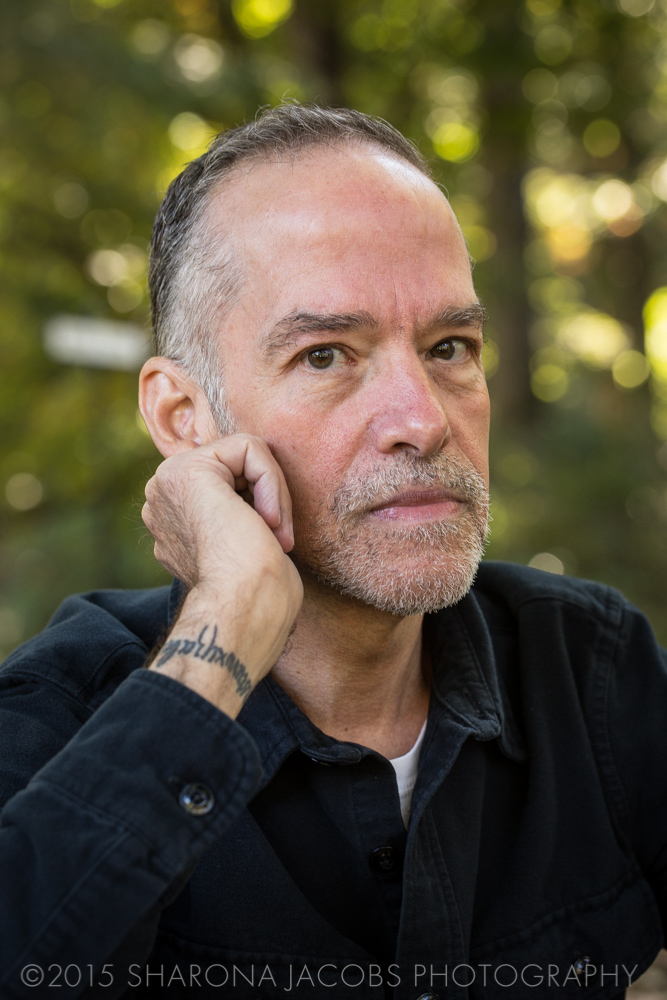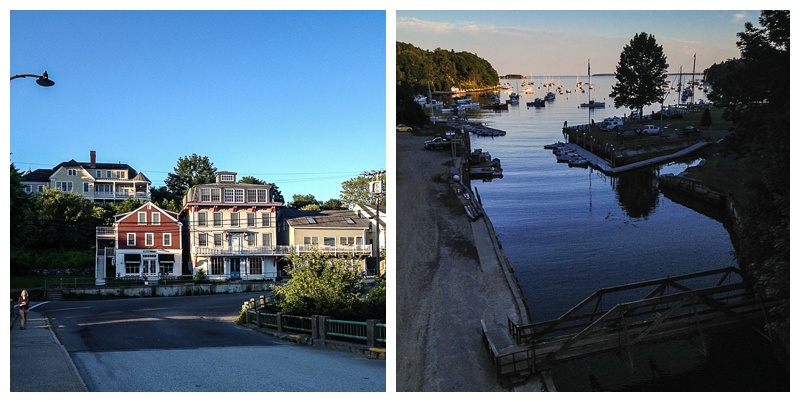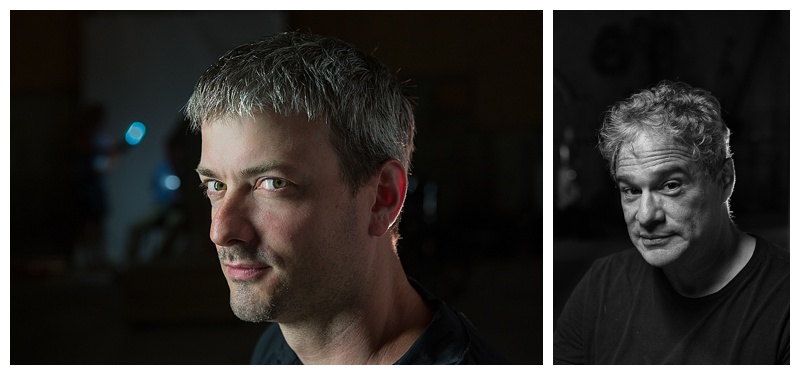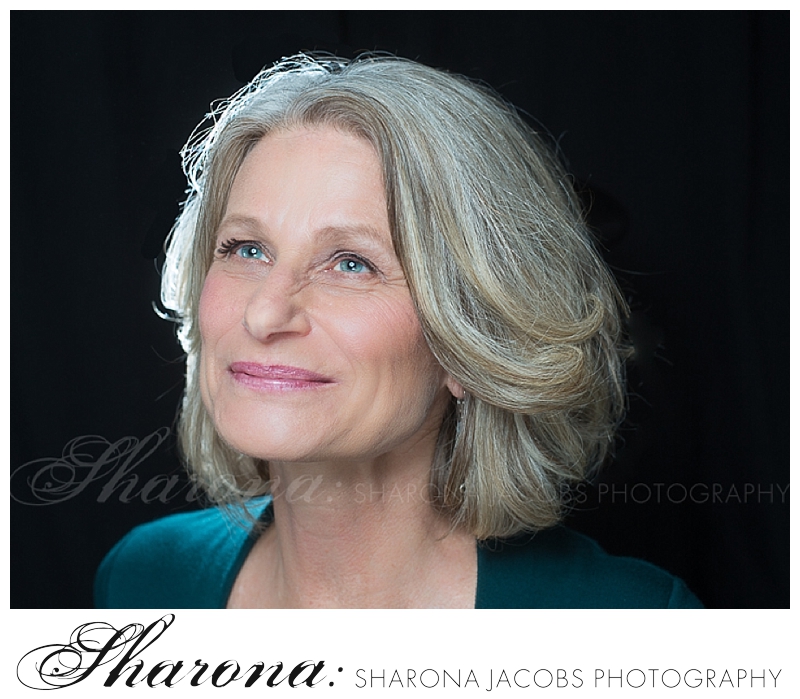Writer and jazz musician, Dominic Green, was one of the most delightful people I've had the good fortune to photograph – a mix of self-deprecating good humor, wickedly keen intelligence (he studied English Literature at St. John's College, Oxford), and a fount of wonderful anecdotes about his theater-bred family and colorful musician friends.
Read MorePortrait
Portraits of Jackie VanderBrug, author of Gender Lens Investing
I recently had the good fortune to photograph brilliant Jackie VanderBrug, co-author of Gender Lens Investing: Uncovering Opportunities for Growth, Returns, and Impact.
The subject of her book is fascinating: women today are an enormous force in the global economy—as successful entrepreneurs, corporate executives and family breadwinners. Yet gender-based violence, the absence of women's legal rights and the persistent wage gap stubbornly remain. This paradox creates an unprecedented and underexplored opportunity for investors. This is the first book of its kind to examine, in depth the advantages of integrating gender into investment analysis. While other books speak to growing numbers and influence of women, Gender Lens Investing moves from economic trends to financial strategy.
Jackie was looking for a portrait that conveyed her extensive knowledge base of her area, and conveyed a strong, smart presence. We worked with different backgrounds, lighting, and expression to nail the image she was looking for in her new book.
Mystery writer portraits, New England chapter
Photographing mystery writers is an absolute delight; I get a little tingle of happiness when I'm contacted by an author who delves into the deep dark depths of the human psyche to create their stories. Recently, I photographed Ray Daniel and Anne Macdonald, both wonderful writers and human beings, who are members - and in the case of Ray, the president - of the New England Chapter of Mystery Writers of America, New England chapter.
When photographing a writer of this type, I try to avoid the obvious cliches, but infuse a subtle tinge of drama and gravitas through lighting and positioning. The goal is to create an author photo for book jacket and publicity use that tells a visual story about both the book and author in a beautiful manner, inviting their readers to get to know both them, and their books, better.
A photographer amidst writers: venturing into the Muse in the Marketplace writers' conference
My booth and the exhibitor's area and bookstore at the Muse in the Marketplace at Boston's Park Plaza Hotel
A table spread with photographs and a fishbowl in front of me, three seven-foot banners dwarfing me from behind, I prepared myself to meet hundreds of writers over three days at Boston's Park Plaza Hotel with a 50/50 mix of exuberance and uncertainty. This scenario lay before me earlier this month when I had decided to take a stab at being a sponsor/exhibitor (party of one) at the Muse in the Marketplace writers' conference organized by GrubStreet, one of the nation's leading creative writing centers (and where my show, the Boston Authors Project, resides). My expectations were fairly low-key; connect with writers, and see how I could help them prepare their book jacket and publicity photography for their upcoming releases.
In truth, I wasn't sure what to expect. I generally work with folks one-on-one, with the exception of gallery openings and speaking at events, so I was equal parts hesitant and excited to take this on. For the first time, I had put together a fishbowl-type of raffle for an author to win a portrait sitting, which was a lot of fun and led to a full fishbowl (won by the lovely Kelly Ford - expect a blog post of Ms. Ford in the soon future). There were photographs in place for people to pick up and examine, a large screen with a slideshow of author images for attendees to peruse, and the requisite marketing materials (livened up by the fabulous faces of past clients).
The wonderful thing about authors as clients is that they uniformly have interesting lives to draw from; at the Muse, I met writers who were art historians, writers who were vets, writers who were professors, writers who fundraise, and writers who work at bookstores. Fiction writers, poets, business writers, all who had come both to get inspired and to learn the intricacies of how to get a book out into the world. While many of the folks I spoke with were from the Northeast, I met a good handful who had certainly gotten their frequent flier milage in - some from California, the Midwest, one from Ireland, all happy to take in as much as they could in three days.
Snapshots of registration table and the morning breakfast briefings at the Muse in the Marketplace
Many of my conversations revolved around the following points:
- Are you a writer? (Not really, unless maintaining this blog counts. And academic articles.)
- What made you want to photograph writers? (Answer: here.)
- Jokes with the punchline being that I only photograph people who hate to be in the spotlight. (It's mostly true!)
- Tell me about how the publicity process works when a book comes out. (I did, very happy to help with that, as it can seem a bit overwhelming, especially to newly-published authors.)
- Where are the photos you create used? (Book jackets, book publicity, editorial/magazine use, webpages, social media.)
- Do you photograph anything but portraits? (I specialize just in commercial/editorial portraiture.)
- Your work is beautiful (Thank you - who doesn't feel good about hearing that?!)
Snapshots behind the booth at the Muse in the Marketplace. From left, celebrating the last day of Passover, and right, my loot from Porter Square Books
Some of the highlights of my time:
- Seeing beautiful artwork by an author/collage artist
- Reconnecting with past clients and current friends, like the glorious Lara Wilson and Rita Zoey Chin (who also spoke about the essentials of dialogue and is one of the kindest human beings on the planet), and the super-delightful Whitney Scharer
- Stopping by the panels of distinguished writers Jennifer Haigh (Topic: Building the World of the Novel - who is also lovely and a fantastic writer - check out her newest novel), and new-to-me writers Anjali Mitter Duva (Topic: You're the Boss! Taking control of your book promotion plan) and Crystal King (Topic: How to use social media for self-promotion and not be annoying) - though sadly I couldn't stay long, as I had to get back down to the exhibitor's room
- Buying books at the Porter Square books table, run by the delightful and wickedly funny Robert Smyth
- Getting hugs from GrubStreet staff and friends like Eve Bridburg and Sonya Larson, who with Christopher Castellani did a wonderful job running the event
- Making connections with the other vendors - I kibitzed with the beautifully-named Jana Van der Veer from Lesley University, and Jenn Scheck-Kahn of GrubStreet and Journal of the Month
- Eating matzoh behind my booth as I finished out Passover in the most crumbly manner possible
All-in-all, it was a delightful way to meet some fascinating people! I slept well afterwards, too.
Writers and presenters Anjali Mitter Duva (Topic: You're the Boss! Taking control of your book promotion plan) and Crystal King (Topic: How to use social media for self-promotion and not be annoying)
The face of health: environmental portraits of nutritionist/media personality Stacy Kennedy
Stacy Kennedy is a board-certified specialist in oncology nutrition and an integrative nutritionist. Featured in the award-winning documentary films, Fat, Sick & Nearly Dead and Fat, Sick & Nearly Dead 2, Stacy is a senior clinical nutritionist at the Dana-Farber/Brigham & Women’s Cancer Center Hospital, and is an adjunct professor in wellness and health coaching at William James College. She, along with her husband, Dr. Russell Kennedy, PsyD, run a private practice, Wellness Guides, LLC, in Wellesley, MA, creating individualized plans for optimizing weight management, disease prevention and management, and promoting longevity.
Stacy, regularly featured in TV, radio, and print media, came to me looking for a series of environmental portraits that supported her private practice and media work. A lively and personable woman, Stacy was looking for compelling imagery that conveyed both her approachability and deep professional knowledge. In additional to her nutrition background, Stacy is an American College of Sports Medicine Certified Health Fitness Specialist as well as a yoga teacher, and it was important to us both to create portraits that also touched on her fitness background as well.
A modern classical musician portrait session
Emily O'Brien is a recorder and traverso player who now hails from Boston after studying recorder and french horn at Boston University, and recorder and Baroque flute at the Hochschule für Musik in Karlsruhe, Germany. She performs both classical and historically informed music, and approached me to photograph her for an upcoming CD of music that features her performing on a modern tenor recorder.
Looking for images both elegant and interesting, Emily wanted photographs that conveyed the gravitas of classical musicianship as well as the warmth of her own personality. The photos needed to feature both Emily as well as the detail of her instrument.
Behind the scenes in the studio with Emily O'Brien playing the modern tenor recorder. Boston, MA.
It was a wonderful afternoon of music and and photography, and I hope to post images of Emily's upcoming CD soon!
BNY Mellon | PFLAG Pride Portrait Project
Last week, I blogged about Manuel and Joe, two men I photographed for BNY Mellon and PFLAG, to showcase portraits of members of the LGBTQ community in order to raise awareness about Pride Month. Peter Tenggren, my contact at BNY Mellon who asked me to create this small group of work, sent me the below picture of the portraits, (printed by Bob Korn Imaging) now settled in the first of its four traveling stops throughout the Boston area for the month of June. I thought I'd share with you all the images, and very importantly, the words behind each person photographed, below.
The Pride Project
Artist’s Statement
I’m delighted to work with BNY Mellon and PFLAG, as a proud ally, to present this collection of five portraits of vibrant members of the LGBT community in honor of Pride Month. With each photograph, I worked to display the humanity, warmth, and intelligence of the person pictured; to show both their inner world as well as to document each person’s features, relationships, and character. Part of the process to create these images was to get to know what was important to each person, and to create a safe and warm environment so that each man and woman pictured would feel at ease to truly be themselves. My goal with each person photographed was to foster a genuine friendship and alliance enabling the viewer of the portrait to feel as though they had somehow already known the person in the photograph. As a portrait photographer, storyteller, and former psychotherapist, it is vital to me that each portrait creates a narrative and sense of recognition between the viewer and the viewed.
- Sharona Jacobs, June 4, 2015 www.sharonaphoto.com
Sharona Jacobs
The Pride Project
Amy and Lori, 2012
Archival Digital Pigment Print
20 x 30 inches
Amy:
“This portrait was taken hours before I married my best friend. It was amazing to have one of the best days of my life documented in such intimate and lovely detail. To me Pride is confidently walking down the street, holding hands with my wife while pushing our 18-month-old twins in their stroller. In the past 20 years my Prideful life has shifted from bar-fueled weekends to Saturday Gymboree outings. What hasn’t changed is me going about my out life in the most honest way possible.”
Lori:
"Pride is raising our children to know that Different doesn't mean Lesser. Differences are a good thing and we should always try to embrace what is different about ourselves and others. Our family might look a little different to some people, but it is full of love and laughter and both the family we were born with AND the family we chose."
Sharona Jacobs
The Pride Project
Mark, 2012
Archival Digital Pigment Print
20 x 30 inches
This portrait of Mark was taken the day Lori and Amy were married, and he and his partner hosted their celebration. Amy: "There’s the family you’re born with and the family you choose. Our chosen family includes two of the kindest, most generous people on the planet who opened their home to host our fabulous wedding.”
Sharona Jacobs
The Pride Project
Robin Lippincott, 2015
Archival Digital Pigment Print
20 x 27.4 inches
Robin: "I am a writer of literary fiction and nonfiction. I have two books coming out: Blue Territory: A Mediation on the Life and Work of Joan Mitchell (November 2015), and Rufus + Syd, a young adult novel co-written with Julia Watts (Spring 2016). I am also the author of the novels In the Meantime, Our Arcadia, and Mr. Dalloway, and the short story collection The 'I' Rejected. My fiction/nonfiction has appeared in over 30 journals, including "The Paris Review," "American Short Fiction," "Fence," "Memorious," "The Literary Review," "The New York Times Book Review," and others. I teach in the low-residency MFA Program at Spalding University. Simply put, pride means having the self-respect to be fully myself.”
Sharona Jacobs
The Pride Project
Manuel and Joseph, 2015
Archival Digital Pigment Print
20 x 26.5 inches
Manuel: "We are constantly making each other laugh. A common scene would include me talking about my day, but in Sofia Vergara's voice, followed by Joe bursting out laughing with his eyes shut, probably thinking to himself, "I hope this is only part of today's show, and not what I actually signed up for!" The roles reverse when Joe starts walking around the kitchen imitating a praying mantis while re-enacting a scene from Isabella Rossellini’s, "Green Porno" (which we went to see on our first Valentine). But life is not all about laughter and smiles. With our highly sensitive and introspective personalities, we often find ourseleves having to support and uplift each other, especially after reading one article too many about some form of injustice in the world. In this higly curated society driven by selfies and social media, we are proud to show all sides of our love, from laughter to tears. And as Milennials, we are thankful that we can safely show this connection outside of our private spaces (even if Joe sometimes shrugs off one too many of my PDAs)."
Sharona Jacobs
The Pride Project Joseph, 2012
Archival Digital Pigment Print
20 x 30 inches
Joe: "I have an innate fear of photographs. Perhaps it's from a youth deeply concerned with judgement and being misunderstood. Or perhaps it's because I've spent my life seeking out difference and broadening my knowledge, skills, experiences, and connections into the multi-faceted person I am today; I feared a portrait could not distill this. Yet Pride, for me, is an inversion of that fear. It is acceptance, celebration, and love for the diversity both within and outside ourselves. And it is in this light that I couldn't be more proud to show--at least an aspect of--our selves and our love.”
Pride Portraits: Joseph and Manuel
Recently, I was asked by a friend at BNY Mellon to showcase some of my portraits of individuals and couples from the LGBT community in conjunction with their partnership with PFLAG in honor of Pride Month. My friend, Peter, biked with my husband and I across Europe in 2002 in the European AIDS Vaccine Ride - 575 miles in seven days with a $5k minimum fundraising goal to help fund research for an AIDS vaccine - and we had kept in touch ever since; it was a pretty intense bonding experience! Peter had seen my Boston Authors Project show at GrubStreet, and asked if I could do something similar for BNY Mellon's partnership with PFLAG (Parents, Families, Friends and Allies united with LGBTQ people to move equality forward) - of course I said yes.
For this project, I photographed Joseph, an architect, and Manuel, one of my former students at MIT, now a scientist, along with a few others - I could only choose a couple of these for the show, so I'm expanding a bit here. Both Manuel and Joe are incredibly funny guys, smart, and a joy to be around - Manuel has a particular touch for interacting with kids of all ages (my daughter snagged him as I took Joe to the studio first), and Joe has a wicked collection of expressions that were just a joy to shoot, as well as similar literary tastes - everything from mindfulness to Orson Scott Card (we both enjoy the fiction, though neither of us share that author's politics). My goal with this collection of photographs was not only to reveal each man's loveliness and character but to also to describe the warmth and joy of their relationship.
ASMP MAG: The Boston professional photographers' salon, featuring interview of ASMP president Mike Ritter
Last week, I wrote about the cross-disciplinary artists group I assembled called the Shalon, made of up a commercial/fine art photographer (yours truly), an artist (Bradford Johnson), a writer (Robin Lippincott), and a filmmaker (John Neely). This week, I am taking a brief break from introducing the members of the Shalon, to introduce you to another small creative group I belong to that is just for commercial and editorial photographers in the Boston area.
This group, is one of a handful in the New England area organized by the New England chapter of ASMP (American Society of Media Photographers). ASMP is a national organization with 39 chapters from Alaska to New England. These small groups are run through the MAG (mutual accountability group) program. MAG is for ASMP members and designed so that you can either find a group currently meeting to join or start your own all through the MAG website.
Our group is composed of Boston commercial, editorial, and fine art photographers – it's up to the individual group to decide how to best use the knowledge, support, and motivation of fellow photographers to achieve the group members' goals. Our group tends to lean on the mentoring, creativity support, and advice side of things. Recently, we've used the group to get feedback on developing new branding strategies, crafting beautifully designed direct mail campaigns, and critique of project work. We even have a monthly creativity support exercises in which we come up with a theme (for example, white-on-white images) to stretch our creative muscles.
I should take a step back, and say something briefly about the national organization of ASMP for those of you unfamiliar with the organization. For photographers either involved or interested in editorial and commercial photography, as a resource, ASMP is an amazing asset. It's a really strong national organization that offers events, resources, incentives, discounts and lobbying for photographers at the national level for those of us that shoot non-retail work – meaning those of us that don't exclusively shoot weddings or family portraits. It's a fantastic resource, providing everything from health insurance to marketing resources to licensing and pricing guidelines for independent commercial photographers. The New England chapter also puts on an amazing free portfolio review each fall in Boston where photographers can meet up with regional art directors, art producers, and curators to get the real scoop on how their portfolios appear to industry experts - this year's event is scheduled for October 16th, 2015.
But the small MAG groups offer something far more personal than insurance, or a great discount on software. It offers a place for photographers to be real about our triumphs and struggles, and get the support of others who understand our exact situations. We are own best resources - if we're unsure how to price a job, need a pinch-hitter because of an emergency or illness, or are feeling stuck professionally or creatively, we know we have a group of fellow professionals in our corner, ready to help the others out. Commercial and editorial photography can be a tough and competitive business, but our group is made up of more than just colleagues; we are friends and supporters of each others' work and businesses.
To that end, I'd like to introduce you to Mike Ritter, of Ritterbin Photography, the current president of the New England Chapter of ASMP, and also one of the founding members of our MAG/MMG group. In the next few weeks, I'll be introducing you to a few of our other members as well through short interviews and examples of their work. Without further ado, let me introduce you to Mike, our intrepid ASMP NE president, and all-around awesome guy. Sharona Jacobs: Hi Mike! Can you please tell us a little bit about yourself?
Mike Ritter: I'm a Pennsylvania hayseed who went to school in the wilds of Maine and then ended up in the big city (for New England) - Boston - in 2002. I worked in a photo lab and photo gallery before heading out on my own freelance photo career in 2005. My photography has taken me all over Boston and through Guatemala, Mexico, Peru, and New Orleans. My wife and I live in a Dorchester triple decker with our daughter, Vivian.
SJ: Can you give us a little bit of information on your company and your typical clients?
MR:
I've run Ritterbin Photography for 10 years focusing primarily on Boston area clients - I primarily shoot events and on location portraits. My clients are principally schools, financial services companies, non-profits, and event companies.
SJ: What made you want to be a photographer?
MR:
My dad gave me his camera in college, and I enjoyed learning on it. While I love the craft of making a great picture, I'm even more excited by the life I can live as a photographer. I meet so many people from so many walks of life and get to know Boston much better than I could in a job at one location with one group of co-workers.
SJ: What type of projects will you be working on in the next few months?
MR:
I'm adding video to my services which is very exciting because it's a collaborative process with other creatives, and it can communicate certain things better than photography (and vice versa). So, it will help me tell clients' stories in as effective a manner as possible. I will also begin to do more direct marketing to clients I'd like to work with rather than relying on word of mouth. And, I'm putting together a website for my Boston Cornerstone project (
) which will roam all over Boston looking for cornerstones and then shooting a time collage cityscapes where they are found.
SJ: Can you tell me how the MAG group helps you in your career as a professional photographer?
MR:
My MAG partners have dealt with issues I'm trying to get under thumb and vice versa. Sharing our work as it's in progress whether it's a recent shoot, website redesign, or a contract etc., makes for a much better final product whatever it is. It's too easy for photographers to work almost entirely alone, but our work and our ideas improve tremendously when we share and work with others. That's why I joined ASMP and was interested in helping re-organize the MAG program.
Shalon interview featuring author Robin Lippincott: part of the independent creatives series
A few months ago, I posted about the Shalon, a cross-collaborative professional creative group formed between myself, an author, an artist, and a filmmaker. Inspired by the concept of 18th century French salons, we decided to meet monthly to discuss our goals, be accountable to one another, and brainstorm ideas. The three menfolk of our group suggested the name based on the first three letters of my name. Being an independent creative professional can challenge the most stalwart of creative souls, and this group helps keep all of us focused and productive, both creatively and from the business standpoint. I hope that this, and future interviews with fellow independent creatives will inspire and support those of us making a living with our art. In that initial post, I mentioned that I'd be focusing on the Shalon-ers individually so you can learn a little more about them and their work. This week, I interviewed our resident writer, Robin Lippincott, the author of the novels "In the Meantime", "Our Arcadia", and "Mr. Dalloway", among many other published works.
Sharona:
Hi Robin, and thanks so much for speaking to us about you and your work. Could you tell us a little bit about you and your work?
Robin: I am a writer of literary fiction and nonfiction. I have two books coming out: Blue Territory: A Mediation on the Life and Work of Joan Mitchell (November 2015), and Rufus + Syd, a young adult novel co-written with Julia Watts (Spring 2016). I am also the author of the novels In the Meantime, Our Arcadia, and Mr. Dalloway, and the short story collection, The 'I' Rejected. My fiction/nonfiction has appeared in over 30 journals, including "The Paris Review," "American Short Fiction," "Fence," "Memorious," "The Literary Review," "The New York Times Book Review," and others. I teach in the low-residency MFA Program at Spalding University, and am also an avid film/museum/gallery goer, as well as a frequent walker in the city.
Sharona: How did you first venture into writing?
Robin: I first got into writing as a result of grief, not death but loss, as has been true for so many writers—one long, hot, long ago summer in Central Florida, where I grew up. Van Gogh's letters to his brother, collected in Dear Theo, and Anne Frank's Diary, were seminal aspects of my aesthetic and moral education that summer.
Sharona:
What are the greatest challenges in your work, and what helps you overcome them?
Robin: The greatest challenge in the work itself is simply getting it right, and in creating something that's beautiful and true. And then there are the challenges that occur at the intersection of art and commerce, at which there's most always a collision: sometimes it's only a bump or a scratch or a dent; at other times the vehicle is totaled. In both cases, you've just got to keep at it, teeth (sometimes) gritted.
Sharona: Whose work do you admire or influences you?
Robin: The list is long. I consider Virginia Woolf and D. H. Lawrence as my literary parents, with Emily Dickinson as a great aunt, and from there it's largely the great minds and/or stylists (the writer's writers), as well as a few Southern writers, whom I most admire. Here's a shortlist: Susan Sontag, Joan Didion, John Berger, William Faulkner, Flannery O'Connor, James Baldwin, Elizabeth Hardwick, James Salter, Grace Paley, James Schuyler, Toni Morrison, Renata Adler, Michael Ondaatje, W. G. Sebald, Anne Carson....
Sharona:
How is the Shalon, or meeting in other creative professional groups, helpful to you?
Robin: The Shalon is invaluable to me for several reasons. First, I believe the artistic pursuit (and the life that goes with that) is best and perhaps only really understood by other artists; in my experience, non-artists just don't/can't fully get it. And so I receive meaningful emotional support, both generally and also specifically. And I also get ideas and inspiration, and stimulation, as well as direct, inside exposure to the work of artists working in other art forms.
Portraits of an Oxford professor in Boston, MA
Nicholas Cole and I first met in 1997 when we were both studying in England, and we immediately struck up a fast friendship. I joke that Nick never left school, as he is now a professor of American history at Pembroke College, Oxford University. I generally try to avoid discussing local politics with Nicholas because it gets a bit embarrassing to be regularly schooled on your own country's current politics and history by a foreigner :-).
Nicholas came to Boston this past week, and we were both delighted that we had time to work together in the studio. Photographing him was a joy on so many levels - good-humored banter alternating with gently poking fun of the other, as old friends do. Even though it had been almost a decade since I'd seen him last, we immediately relaxed into working together in the studio while amiably chatting away.
My goal with Nicholas' portraits was to capture his intelligence, warmth, kindness, and dry humor. In a few of the shots, I included his beautifully crafted titanium and leather crutches to create some environmental context. Yet front and center, I focused on Nick's expressive face and the intelligence and dry amusement that lights his eyes. As a photographer, capturing the life of the mind - and what a great mind I had to work with! - is a never-ending joy.
Starting over for grownups
Rocky DiRico, a 10th degree black belt in Kenpo karate, started competing after age 35 and went on to over 700 first place finishes and 100 grand championship wins, making him the most awarded senior competitor in the history of sport karate. He, and my own joyful/humbling/frustrating/wonderful experience coming back to karate training as an adult learner, inspired this post. He is pictured here with his wife, Shihan Wendy DiRico.
One of the things I most admire about children is that they're not afraid to fall down on their butts when they try something new.
They'll just keep trying new approaches, sometimes clever, sometimes awkward, to achieve what they want. No one expects children to be particularly good at anything. Figuring out how to pull life's strings is what childhood is all about, and kids, on the whole, think its really fun to learn new things. They grow creatively when they try to solve problems, and at least in the first few years, don't care how they are perceived while trying out new ideas.
Fast forward to adulthood and self-awareness and the need for basic competency in front of others. We've spent most of our formative years training to do something, whether it is singing, acting, or accountancy. Adults are proud of the skills we've gained and these are generally the ones we use in front of company (unless it's karaoke, and then, all bets are off as there's generally alcohol involved). Starting something new as an adult feels especially awkward, because our brains aren't as malleable, we're resistant to change, and don't want to look silly or incapable in front of others as we figure out our next new skill.
So what happens when we're forced to change and learn something new? Either because of circumstance, or because we're stifled and need to do something differently, the game changes and it's time to upgrade our skills. With the exception of some open-minded, driven, and adventurous souls, most adults react by feeling uncomfortable, perhaps even a bit scared. Some of us even get paralyzed, and don't know what to do next. So we sit and grind our wheels, using our energy to feel anxious, rather than harnessing the angst into something productive. We tend to cling to what we know, even though it is time to grow or change. Do any of these sound familiar?
- I want to start a new project that's different than my current work but I'm not sure where to start - I have an idea, but I just need motivation - I'm afraid I'm going to look like an idiot trying something new
So what should you do to kick yourself out of your paralysis? Shakespeare would say, "To thine own self be true." The ancient Greeks would say, "Know thyself". Francis Bacon would say, "Knowledge is power." And Nike would say, "Just do it."
When you don't know where to start in a new endeavor (career, project, hobby), start with your interests and daydreams, perhaps even document your current problems. Did you daydream about being an astronaut as a kid? Take a night course in astronomy, create a beautiful portrait series of local astronomy professors in the moonlight, or get a second-hand telescope and start a basic blog about your own discoveries as a new star seeker.
What are your favorite holidays and celebrations? What is on your bucket list, and you always hoped to do someday? Combine those interests into a new project. For example, if you're a autumn-loving, adrenaline-seeking photographer feeling stale, do a skydiving shoot on Halloween with models in full costume at sunset - mix, match, see what happens. Juxtaposition is your friend; combine bits of who you are to create something no one has seen before.
But most important is the mental game of getting out of our own way. I have a few suggestions from back when I worked in vocational psychology, which I'll write in layperson's terms so you don't fall asleep at your computer.
1. Write a worry journal
The basis of cognitive psychology is, "You are what you think." I'd add, "If it's on paper, it's not in your noggin." Write down all your worst fears, then counter each fear with a more positive likely scenario. E.g.:
Negative thought I will never learn how to use off-camera lighting because I'm not technical
Rational thought I can learn how to use off-camera lighting by taking a workshop that is aimed at lighting for beginners
2. Talk to a friend
Sometimes you need a sympathetic friend to kindly listen to you, and then kick you in the behind once you've unloaded your concerns. Better yet, create an accountability partnership so you both have someone to check in with about your new ventures.
3. Find a mentor
For some people, it really helps to find an advisor who has more knowledge and experience. Some mentors are volunteer professional contacts, others are coaches, and another source of great advisors are mental health professionals, for when you're truly feeling stuck. I currently advise a few photographers looking for both technical advice, portfolio reviews, and accountability - it can be a useful tool in your professional arsenal to get unstuck. But for many, all that is needed is someone who they meet with on a regular basis who has more experience than they do.
4. Let go of perfect
It's better to do something, anything, and get it out there than to create the most perfect creation that never sees the light of day. This is when you bring out the Nike slogan!
5. Make a date
Mark in your calendar the date you are going to have accomplished your goal of a new skill. Tell your accountability buddy.
6. Reward yourself
Whether it's a big box of chocolate, a marathon tv-watching session, or a weekend trip, make sure you promise and deliver a big reward for getting out of your comfort zone.
Kelly Link, author of "Get in Trouble", in the news
Kelly Link's new book of short stories, "Get in Trouble", came out out February 9th, 2015, and in honor of her well-recieved work, I thought I'd focus on her photo shoot from last fall. Kirkus Reviews wrote of her book, "“In stories as haunting as anything the Grimm brothers could have come up with, Link (Magic for Beginners, 2005, etc.) gooses the mundane with meaning and enchantment borrowed from myth, urban legend and genre fiction."
Kelly, a warm, gentle, and thoughtful person, was just a joy to work with. She, and her friend and fellow writer Holly Black, drove from western Massachusetts for to be photographed the same day, and we alternated between my studio and the beautiful Robbins Library in Arlington, MA. Kelly and Holly are close friends, and we all collaborated together on the shoot, both in our research and the details. Both women write in the fantasy genre, and they had developed a firm friendship after meeting at a writer's convention and discovering they lived close by.
Kelly's work, along with some of the other imagery I've taken of her, has been mentioned recently in Wired, Salon, NPR, the LA Times, and The Stranger, among many other media outlets. Congratulations, Kelly!
The Shalon: A cross-creative collaborative creation
A few months ago, four creative friends came together to create a super-powered creative group. Inspired by the concept of 18th century French salons, an artist, an author, a photographer, and a filmmaker decided to meet monthly to discuss our goals, be accountable to one another, and bounce ideas off the others as we go through the creative process, each assisted by the caffeine of their choice. The three menfolk of our group suggested the name based on the first two letters of my name, rather enjoying being clever with their words. Being a professional creative can be lonely and isolating at times, so having a group of like-minded souls creates some substance in what can sometimes feel like a vacuum. I've collaborated with each gentleman on various projects, but I'll just give you the bare bones in this post. So without further ado, let me introduce you to my team of creative superheroes. In the future, I'll be focusing on them individually so you can learn a little more about them and their work.
First is Brad(ford) Johnson, a kind-hearted and creative artist who resides in Somerville, MA, and plays with the boundaries between photography and painting. You can check out his work here.
Next we have the exceedingly talented Robin Lippincott, a writer and the author of the novels "In the Meantime", "Our Arcadia", and "Mr. Dalloway", among many other published works.
And finally, the filmmaker of our group, John Neely. John has worked in documentary filmmaking and non-fiction TV for over a decade for film, television, museums, and corporate clients. He also produced the short film about the opening of my Boston Author Project.
And there's me!
Light Work with Gregory Heisler at the Maine Media Workshops – Part Two
Light Work with Gregory Heisler at the Maine Media Workshops - Part One
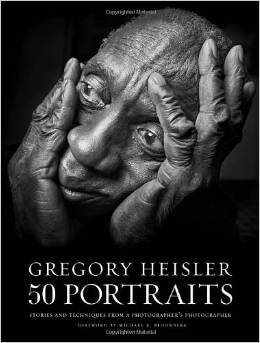 Surrounded by so many images every day, it’s rare you come across one that arrests you and pins you by your ears. When first I saw the cover of Gregory Heiser’s recent book, 50 Portraits, I felt jolted. The image, mostly velvety black, was the portrait of an older African-American man, bathed in a pool of light, his enormous hands wrapped around his lined face. It was extraordinary; simple yet beautiful and interesting, and it grabbed me and made me want to know all about this person caught in the pool of light. I later learned that he was the life-long masseuse of Muhammad Ali, but it almost didn’t matter, because I could see who he was caught in that moment.
Surrounded by so many images every day, it’s rare you come across one that arrests you and pins you by your ears. When first I saw the cover of Gregory Heiser’s recent book, 50 Portraits, I felt jolted. The image, mostly velvety black, was the portrait of an older African-American man, bathed in a pool of light, his enormous hands wrapped around his lined face. It was extraordinary; simple yet beautiful and interesting, and it grabbed me and made me want to know all about this person caught in the pool of light. I later learned that he was the life-long masseuse of Muhammad Ali, but it almost didn’t matter, because I could see who he was caught in that moment.
Heisler’s book is an unusual photo book, in that it was just as well-written as it was photographed, with a wry, kind, and humorous voice. He has photographed more than 70 covers for Time Magazine, and is known for his evocative portrait work. Gregory, or Greg as we came to know him over the week I spent in Rockport, Maine at the Maine Media Workshops working with him, is exactly that in person. I had been considering taking a longer workshop relating to my portrait work this year, and I knew from reading his book, and seeing him on YouTube, that I would be in good hands with this master photographer as my teacher. I remember my heart pitter-pattering when I signed up for the workshop back in April. Not only I was so excited to meet Gregory, fan-girl like, but because it was quite an investment to take a week-long workshop, and a working photographer can buy a lot of equipment for the price of a workshop! However, knowledge is the investment that always pays back (at least that what my student loan officers say ;-).
The advanced workshop I chose was called Light Work, and the majority of my classmates were working artists and photographers.The first day we reviewed five images by each of our fellow class members, as a way of introduction. They ran the gamut; one was an editorial photographer, another a fine art photographer, another an architecture photographer, another a food photographer for a major supermarket. I was one of the few folks who had a lot of experience with commercial portraiture, but others were certainly more technical. A couple of folks were retired, and were conducting photo projects around the world. Some had gone to art school, some hadn’t, some were sent by their employers, but most weren’t. It really ran the gamut. Some of us had a lot of experience with strobes and artificial continuous light, and others primarily had shot using ambient light. Seeing each other’s images was a great introduction, especially since I’m famously bad at remembering names, but I always remember what they shot, their senses of humor, and their character quirks. Heisler thought my portraits were lovely - I showed five of my recent author shots - and that certainly brought out the warm fuzzies on my end of things! He was similarly encouraging to the others in the group as well.
In the evening, we went to the Rockport Opera House to watch two of the faculty members present and speak about their work. One was our own Gregory Heisler, and the other was the very inspiring and rather wonderful fine art photographer, Cig Harvey, who presented her beautiful visual storytelling work. She was so lovely and personable, and her work took my breath away with its depth and emotion; I hope to take a course with her sometime soon. After the talks, we students chose to bumble around Rockport, photographing available light that we’d imitate in the studio the following day.
Meyer Psychology: Photographing psychologist and psychotherapist headshots in Arlington MA
 As both a trained psychotherapist and photographer, it gives me great joy to receive a phone call from anyone in the mental health field who is looking to commission photography. Wynne and Cary Meyer are a husband-and-wife team who have a joint psychology and counseling practice in Arlington, MA. They are warm and kind people, really delightful to work with and get to know, and I wanted to make sure that potential clients would get a great first impression from seeing their headshots on their practice's webpage.
As both a trained psychotherapist and photographer, it gives me great joy to receive a phone call from anyone in the mental health field who is looking to commission photography. Wynne and Cary Meyer are a husband-and-wife team who have a joint psychology and counseling practice in Arlington, MA. They are warm and kind people, really delightful to work with and get to know, and I wanted to make sure that potential clients would get a great first impression from seeing their headshots on their practice's webpage.
Wynne, a psychotherapist, is a lovely and insightful person who integrates mindfulness training into her cognitive-behavioral work. Many of her clients are women, parents, and couples, and she wanted to make sure her clients would get a sense of her personality and could also relate to her when we discussed how we could best approach her portrait. I took a very honest approach to photographing her, and I think the image she chose really captures her thoughtfulness.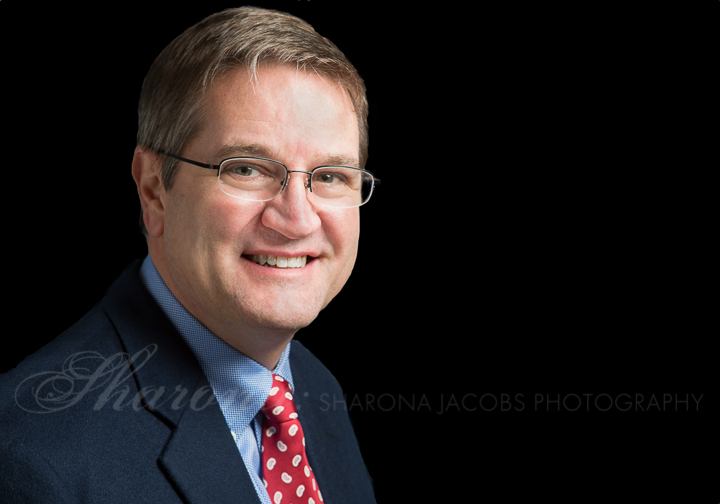
Cary, a sharply intelligent psychologist with a warm sense of humor, specializes in working with men as they transition between life stages. He works with clients on both relationship and career issues, and is also a staff psychologist at McLean Hospital in Belmont, MA. His image is a bit more business-like, but we also both wanted to capture his approachability as well.
It was wonderful to work with Cary and Wynne, and even with the few hours I spent with them, I could tell that their clients would be in good hands.
Portrait of an Executive Director of a nonprofit: Donna Smith Sharff of the Children's Room
Literary photography: Photographing author Robert Howard
 Robert Howard, author of Brave New Workplace, approached me because he was hoping to update his author imagery. In addition to writing about leadership and the workplace, he has recently also written a memoir that integrates literary criticism, another area of expertise, and wanted his photographs to mirror his professional growth.
Robert Howard, author of Brave New Workplace, approached me because he was hoping to update his author imagery. In addition to writing about leadership and the workplace, he has recently also written a memoir that integrates literary criticism, another area of expertise, and wanted his photographs to mirror his professional growth.
Because of his new ventures, Bob needed to update both his more traditional headshot, and also wanted a more creative portrait that reflected his new ventures. I shot at his home in Newton, MA, so we could create environmental portraiture that was meaningful to him, and also shot a few updated headshots that he could use for his work in technology and leadership.
Short film by CE Courtney about Sharona Jacobs Photography
Wondering what it is like to work with portrait photographer Sharona Jacobs? The video, below, gives you a behind-the-scenes peek into how the Boston-based photographer works with the authors, actors, professors, and creative professionals she photographs day-to-day, and includes interviews with several of her clients, including critically acclaimed authors Steve Almond, Jon Papernick, and Rita Zoey Chin. You'll also see examples of her work with NYTimes best-selling novelist Jennifer Haigh, editor of TechCrunch John Biggs, and film and stage actress Tracie Thoms. Click on the Vimeo icon in order to see it full-size. If you don't see the video thumbnail immediately, please refresh your page.
[embed]http://vimeo.com/67943813[/embed]
Sharona Jacobs Photography: editorial portraiture from Sharona Jacobs on Vimeo.





